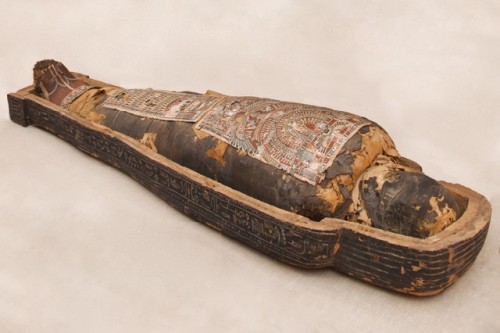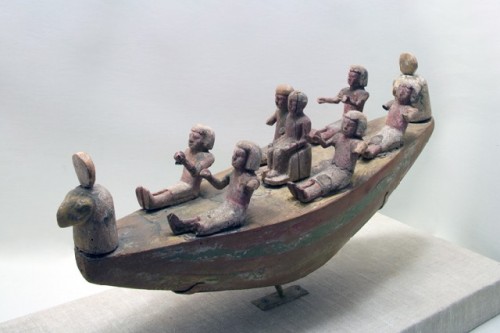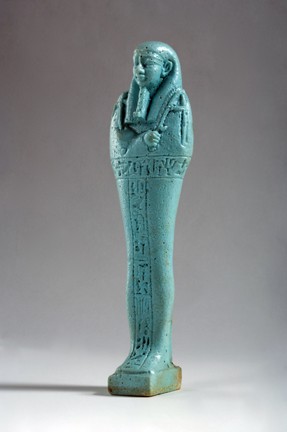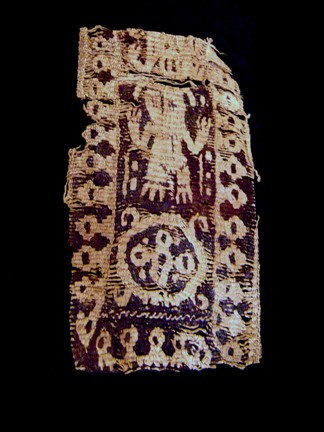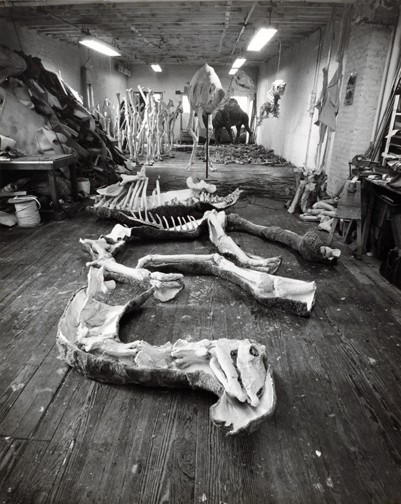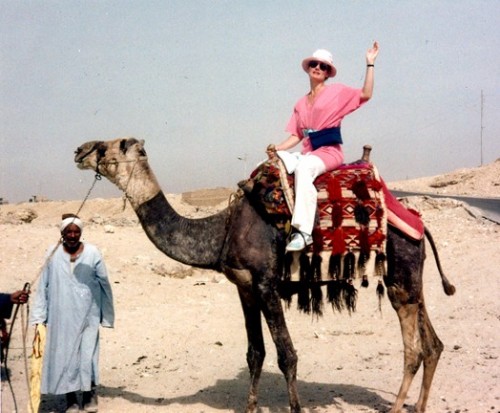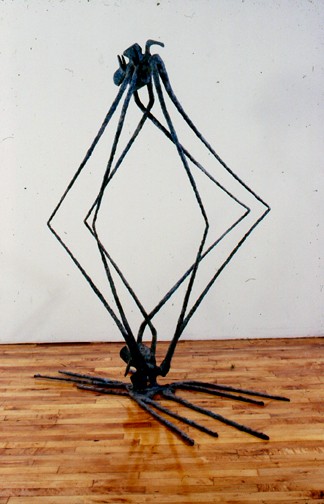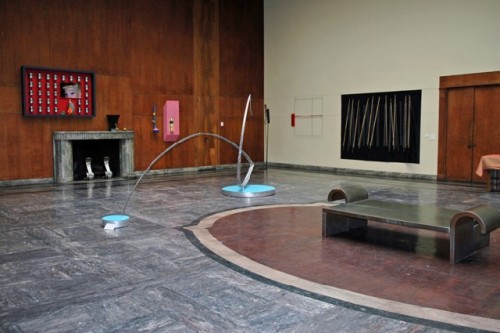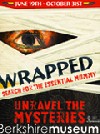Wrapped at the Berkshire Museum
Nancy Graves, Joe Wheaton & Susan Rodgers, Ven Vosiey
By: Charles Giuliano - Jul 28, 2010
There is a lot to see at the Berkshire Museum in Pittsfield this summer.
The main event is Wrapped: Search for the Essential Mummy to October 31. In an adjoining gallery is a thumbnail Nancy Graves: Journey to North Africa to October 31. The elegant and spacious Crane Gallery features a collaboration Joe Wheaton & Susan Rodgers: Spatial Relationships to October 11. The newly launched Wider Window Gallery features artist in residence Ven Vosiey’s Artifact to August 29.
Under the watch of director Stuart Chase, over the past few years, the museum has been reconfigured from a sleeper to a player. That started with a $9 million renovation that brought the institution up to date with an essential climate control system as well as the makeover of galleries and installations. While conducting an inventory of the collection Chase unearthed important, valuable but never displayed 20th century Russian paintings. They were deaccessioned at auction just nano seconds before the bottom fell out of the art market.
Museum guidelines state that money raised through works sold may only be used for acquisitions and maintenance of collections. So while there is a nice fund to purchase works this resource may not be applied to operating expenses. Like every other arts organization the Berkshire Museum has faced budget cuts and austerity measures to stay afloat. As a Cinderella among more glitzy Berkshire cultural institutions Chase has to try harder for funding sources.
A part of his successful charisma derives from daring to be different and building from there. Truly, the museum is unique. Where else will one find dinosaur bones, stuffed animals, nature displays, tropical fish, and fine arts all under one roof?
Mongrel yes. But eclectic is good. It translates into lots of different reasons to visit the museum. As a very old museum, the senior citizen of the region, it derives from institutions modeled on the era of exploration and the rise of the Wunderkammer. Or literally, a room or wonders. There was great curiosity about global discoveries and this led to a desire to collect specimens. The earliest museums like that of Charles Willson Peale (April 15, 1741 – February 22, 1827) or the South Kensington (later the Victoria and Albert) were devoted to educating the public. Toward that end, during a time when people traveled less than today, museums were filled with instructive plaster casts of ancient Greek and Roman masterpieces of sculpture. The Berkshire Museum still displays them.
The rich citizens of the region acquired souvenirs during their grand tours. Many of these exotic objects found their way to the Berkshire Museum. For Chase, who gushes about his love of objects, this has proven to be a treasure trove and focal point for organizing special exhibitions.
Museums strive to bring context to their collections.
Yesterday the always upbeat and entertaining Chase swept me through the galleries. Now and then in the Egyptian exhibition he paused to point out objects as “Ours. It is the first time it is on display in like a century.”
Organizing traveling exhibitions such as this always leads to discoveries. One gets to participate in such lively and popular shows by having objects to lend. It is the quid pro quo that is the norm for such projects. In doing the research and restoration entailed (partly from the Russian fund which allows for conservation as well as acquisition) Chase made some interesting connections. Pointing to a handsome mummy decoration he learned that it is a part of one owned by the Louvre.
But the biggest news of this event is that the 2,300 year-old mummified remains of a father and son from the site of Akhmim have been reunited. The Berkshire Museum owned Pahat while Shep-en-min is loaned by Vassar College. It seems that Vassar has never displayed its mummy. Some institutions are squeamish about showing human remains.
Last February Pahat underwent a CT scan and the results are on view in the exhibition. Chase demonstrated a touch screen where visitors are able to scan through layers of the mummy. Groovy.
This lively and intriguing exhibition reveals everything you might possibly want to know about mummys. From how they were preserved to their mystical and religious significance. While not really a fine arts exhibition it cuts through a broad range of disciplines and interests from history to science, archaeology, medicine, and mythology.
It is typical of Chase's projects that there are lots of ways to skin the cat. Or, in this case, embalm it.
The transition to the gallery of work by Nancy Graves (1939-1995) was seamless. Again we encountered skeletal remains on the floor. This time parts of a camel. How evocative of Egypt. But they were actually created by a contemporary artist.
The works, as it turned out, were created by a major artist who grew up in Pittsfield. She loved and was inspired by the natural history collections of the museum. Her father, Walter Graves, was for many years assistant director of the museum. In 1970 she traveled to North Africa and produced the film Izy Boukir with a focus on camels. She later became known for life size camel sculptures.
Chase strives to include regional contemporary artists in the programming.
In the Crane gallery he invited two artist friends Joe Wheaton and Susan Rodgers to create an installation. “I knew their work and that they often interact with each other,” Chase said. “Rather than select works I invited them to install whatever they wanted in the museum.”
Looking into the space he discussed how there was a diagonal and everything on one side was the work of one artist. Had we not been informed it might well have been viewed as the effort of a single artist. So Spatial Relationships is really about kindred spirits and a shared vision.
“This is I believe our first video installation” Chase said as we viewed works by Ven Vosiey. During a residence at the museum he created works inspired by objects and materials in the collection. We are invited to interact with the works.
Dropping a coin in a box animates a small toy, stuffed bear. It starts to speak to us. With some amusement Chase identified the voice as that of the artist Jarvis Rockwell who is something of a local character and celebrity (creator of Maya a pyramid of toys) on display in DownStreet in North Adams.)
We asked about attendance.
“It’s been good but not what we had hoped for” Chase said. “Not enough rainy days. On rainy days families flock to museums.” Oh well.


